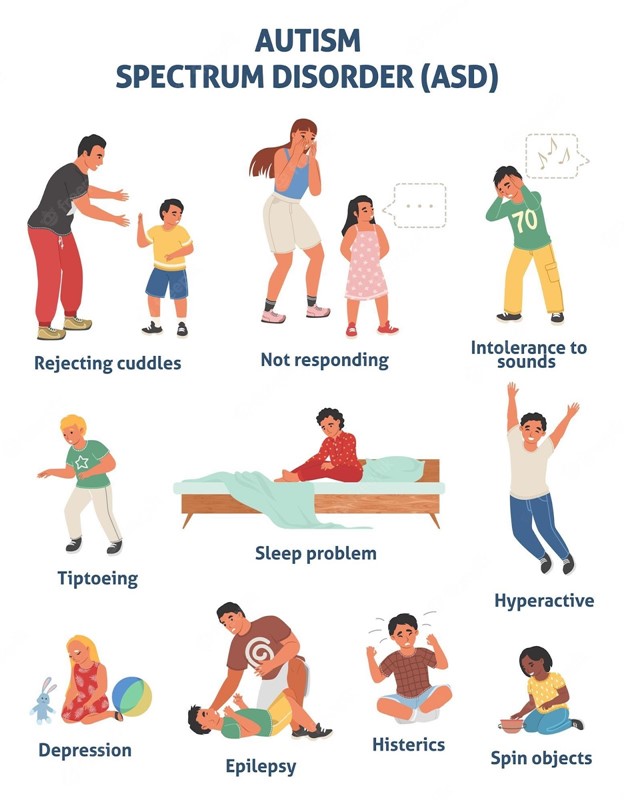The nurse is caring for a 10-year-old who has an acute head injury, has a pediatric Glasgow coma score of 9. and is unconscious. Which interventions should the nurse include in the child's care plan?
Elevate the head of the bed 15 to 30 degrees with head maintained a midline position.
Maintain an active stimulating environment
Perform active chest percussion and suctioning every 1 to 2 hours.
Instruct child on preforming active range of motion
The Correct Answer is A
A. Elevate the head of the bed 15 to 30 degrees with head maintained a midline position.
Correct Explanation: This intervention is appropriate for a child with an acute head injury.
Explanation: Elevating the head of the bed helps reduce intracranial pressure by facilitating venous drainage from the head. However, it's important to keep the head in a midline position to prevent neck flexion, which can obstruct venous flow. Elevating the head 15 to 30 degrees is a standard approach for managing intracranial pressure in patients with head injuries.
B. Maintain an active stimulating environment.
Incorrect Explanation: Maintaining an active stimulating environment is not suitable for a child with an acute head injury.
Explanation: A child with an acute head injury should be in a quiet and calm environment. Overstimulation can worsen the condition by increasing intracranial pressure. It's important to minimize stimuli to allow the brain to heal.
C. Perform active chest percussion and suctioning every 1 to 2 hours.
Incorrect Explanation: Chest percussion and suctioning are not relevant interventions for an acute head injury.
Explanation: Active chest percussion and suctioning are typically used to manage respiratory conditions. While maintaining good respiratory function is important for overall patient care, it's not a primary intervention for an unconscious child with a head injury.
D. Instruct child on performing active range of motion.
Incorrect Explanation: Instructing the child on performing active range of motion is not appropriate for an unconscious child with a head injury.
Explanation: An unconscious child cannot actively perform range of motion exercises. Additionally, it's not a priority intervention in the acute phase of head injury management.
Nursing Test Bank
Naxlex Comprehensive Predictor Exams
Related Questions
Correct Answer is B
Explanation
A. Pallor:
Pallor refers to paleness of the skin. While it can be associated with various medical conditions, it is not a typical symptom of hyperglycemia. Pallor is more commonly seen in conditions related to anemia or circulatory issues.
B. Lethargy
Explanation:
A blood glucose level of 280 mg/dL in a school-age child indicates hyperglycemia, which is an abnormally high level of glucose in the blood. Hyperglycemia commonly occurs in diabetes mellitus, specifically in Type 1 or Type 2 diabetes. Lethargy is a symptom associated with high blood glucose levels. It is characterized by a state of extreme tiredness, sluggishness, and reduced responsiveness. Hyperglycemia can lead to an inadequate supply of glucose to the brain cells, which can result in lethargy and confusion.
C. Shallow respirations:
Shallow respirations typically do not directly correlate with high blood glucose levels. Hyperglycemia's primary symptoms are related to changes in metabolism and glucose utilization, and it doesn't usually affect respiratory patterns in the same way that, for instance, respiratory distress might occur with conditions like ketoacidosis in diabetes.
D. Tremors:
Tremors, or uncontrollable shaking or trembling, are more commonly associated with hypoglycemia (low blood glucose levels) rather than hyperglycemia. Low blood glucose levels can cause the body to release adrenaline, leading to symptoms like tremors, anxiety, and sweating.
Correct Answer is D
Explanation
a. Allow for adjustment of rules to correlate with the child's behavior: While flexibility can be important, allowing rules to be adjusted based on behavior can lead to inconsistency and confusion for the child. Consistent rules and expectations are crucial for children with ASD, as they thrive on predictability and structure.
b. Allow for imaginative play with peers without supervision: Children with ASD may have difficulties with social interactions and imaginative play. Supervision is important to ensure that play is safe, appropriate, and supportive of social skill development. Unsupervised play might not be beneficial if it leads to misunderstandings or conflicts.
c. Provide a flexible schedule that adjusts to the child's interests: Children with ASD generally benefit from a structured and predictable schedule rather than a flexible one that changes based on their interests. Predictability helps them feel secure and reduces anxiety. A flexible schedule could lead to increased stress and difficulty in transitioning between activities.
d. Establish a reward system for positive behavior: A reward system is an effective strategy for encouraging positive behavior in children with ASD. Reinforcement of desired behaviors helps to build and maintain new skills and can provide motivation. This approach aligns well with behavioral interventions commonly used with children on the autism spectrum.

Whether you are a student looking to ace your exams or a practicing nurse seeking to enhance your expertise , our nursing education contents will empower you with the confidence and competence to make a difference in the lives of patients and become a respected leader in the healthcare field.
Visit Naxlex, invest in your future and unlock endless possibilities with our unparalleled nursing education contents today
Report Wrong Answer on the Current Question
Do you disagree with the answer? If yes, what is your expected answer? Explain.
Kindly be descriptive with the issue you are facing.
